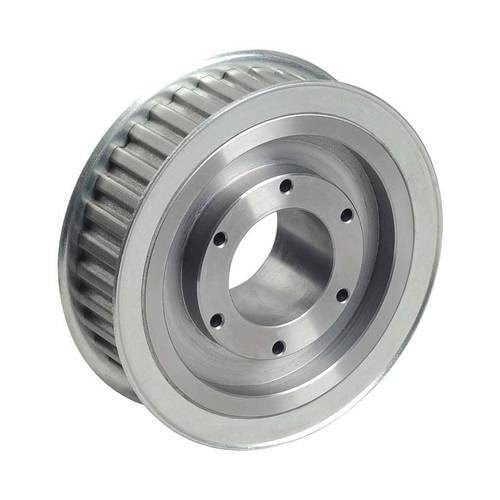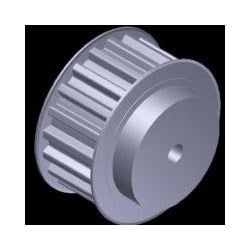

Timing Belt Pulleys
| Price per Unit | Piece |
| Size | 4-8 inch |
| Usage/Application | Industrial |
| Material | SS |
| Capacity | 1-2 Ton |
| Number Of Grooves | Single Groove |
Timing belt pulleys are essential components in synchronous power transmission systems, working in conjunction with timing belts to transfer motion and ensure precise timing. These pulleys feature toothed grooves that match the profile of the timing belt, allowing for secure engagement and efficient power transmission. Constructed from materials such as aluminum, steel, or plastic, they are designed to withstand the rigors of industrial applications while providing accurate motion control.
Industries such as automotive, robotics, packaging, and manufacturing rely on timing belt pulleys for their critical power transmission needs. In automotive engines, they synchronize the rotation of the crankshaft and camshaft, controlling the opening and closing of engine valves for optimal performance. Similarly, in robotics and automation systems, these pulleys provide precise motion control for robotic arms, conveyor systems, and other automated machinery, ensuring accurate positioning and movement. In packaging machinery, timing belt pulleys facilitate the synchronized operation of filling, sealing, and labeling equipment, contributing to efficient and reliable packaging processes. Additionally, in manufacturing processes such as CNC machining and 3D printing, timing belt pulleys play a crucial role in driving the movement of tools and components with precision.
The advantages lie in their precise tooth profile, durability, and versatility. Their toothed design ensures accurate engagement with the timing belt, minimizing backlash and ensuring consistent motion transmission. Additionally, timing belt pulleys offer high resistance to wear, corrosion, and temperature fluctuations, ensuring long-lasting performance in demanding industrial environments. Moreover, their modular design allows for easy customization and adaptation to various applications and requirements.
Key parameters for the design include pitch diameter, tooth profile, bore diameter, and material selection. Pitch diameter determines the effective diameter of the pulley and influences the speed ratio between pulleys in a drive system. Tooth profile options include trapezoidal, curvilinear, and modified profiles, chosen based on compatibility with the timing belt and desired motion characteristics. Bore diameter is selected to match the shaft diameter of the motor or driven component, ensuring secure mounting and alignment. Material selection depends on factors such as load capacity, operating conditions, and environmental considerations, with options including aluminum for lightweight applications or steel for heavy-duty industrial use.
In conclusion, they are indispensable components in synchronous power transmission systems, offering precise motion control, durability, and versatility across various industries. Their toothed design, resistance to wear, and modular construction make them ideal for applications requiring accurate timing and reliable power transmission. By carefully considering key design parameters, industries can select and implement timing belt pulleys that meet their specific requirements, enhancing productivity and reliability in their operations.

